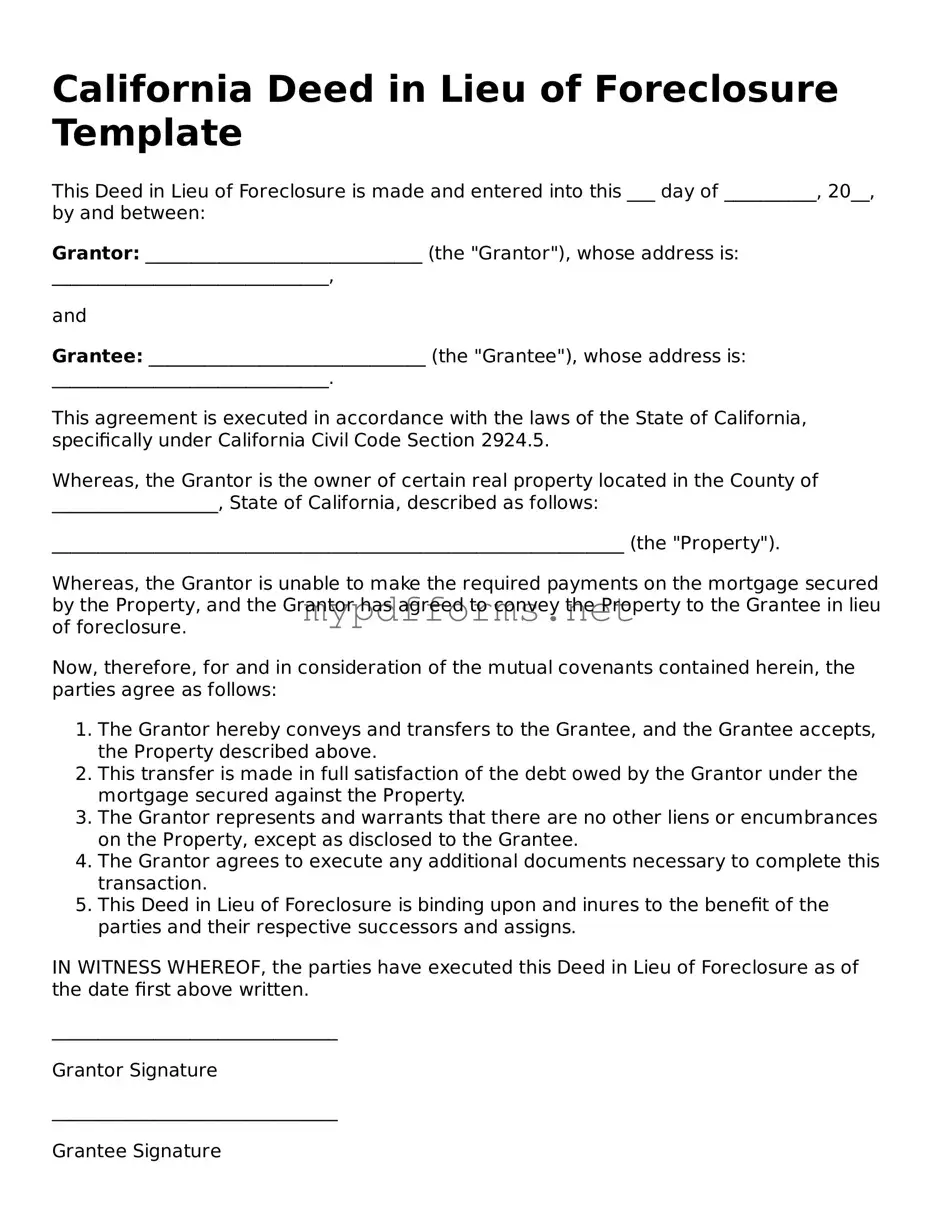A Short Sale is a process where a homeowner sells their property for less than the amount owed on their mortgage. Like a Deed in Lieu of Foreclosure, it allows the homeowner to avoid foreclosure. In both cases, the lender agrees to accept less than the full amount owed. However, in a short sale, the property is sold to a third party, while in a Deed in Lieu, the homeowner transfers ownership directly to the lender. Both options aim to relieve the financial burden on the homeowner and minimize losses for the lender.
A Loan Modification is another document that shares similarities with a Deed in Lieu of Foreclosure. In a loan modification, the lender agrees to change the terms of the mortgage to make it more affordable for the homeowner. This can include lowering the interest rate or extending the loan term. Both processes aim to help homeowners avoid foreclosure, but while a Deed in Lieu transfers ownership, a loan modification keeps the homeowner in their home by making payments manageable.
A Forebearance Agreement is also comparable. This document allows a homeowner to temporarily pause or reduce their mortgage payments. The lender agrees to this arrangement, often to help the homeowner get back on their feet financially. Like a Deed in Lieu of Foreclosure, it provides a way to avoid foreclosure. However, a forbearance is a temporary solution, while a Deed in Lieu is a permanent transfer of property ownership to the lender.
For those looking to ensure their healthcare wishes are respected, utilizing a Do Not Resuscitate Order form is crucial, especially for individuals facing serious health challenges.
Finally, a Bankruptcy Filing can be similar in its goal to prevent foreclosure. When a homeowner files for bankruptcy, it can halt foreclosure proceedings temporarily. This gives the homeowner time to reorganize their finances. Both a Deed in Lieu and bankruptcy can provide relief from the threat of losing a home. However, bankruptcy involves legal proceedings and can impact credit scores significantly, while a Deed in Lieu is a more straightforward transfer of ownership without court involvement.
